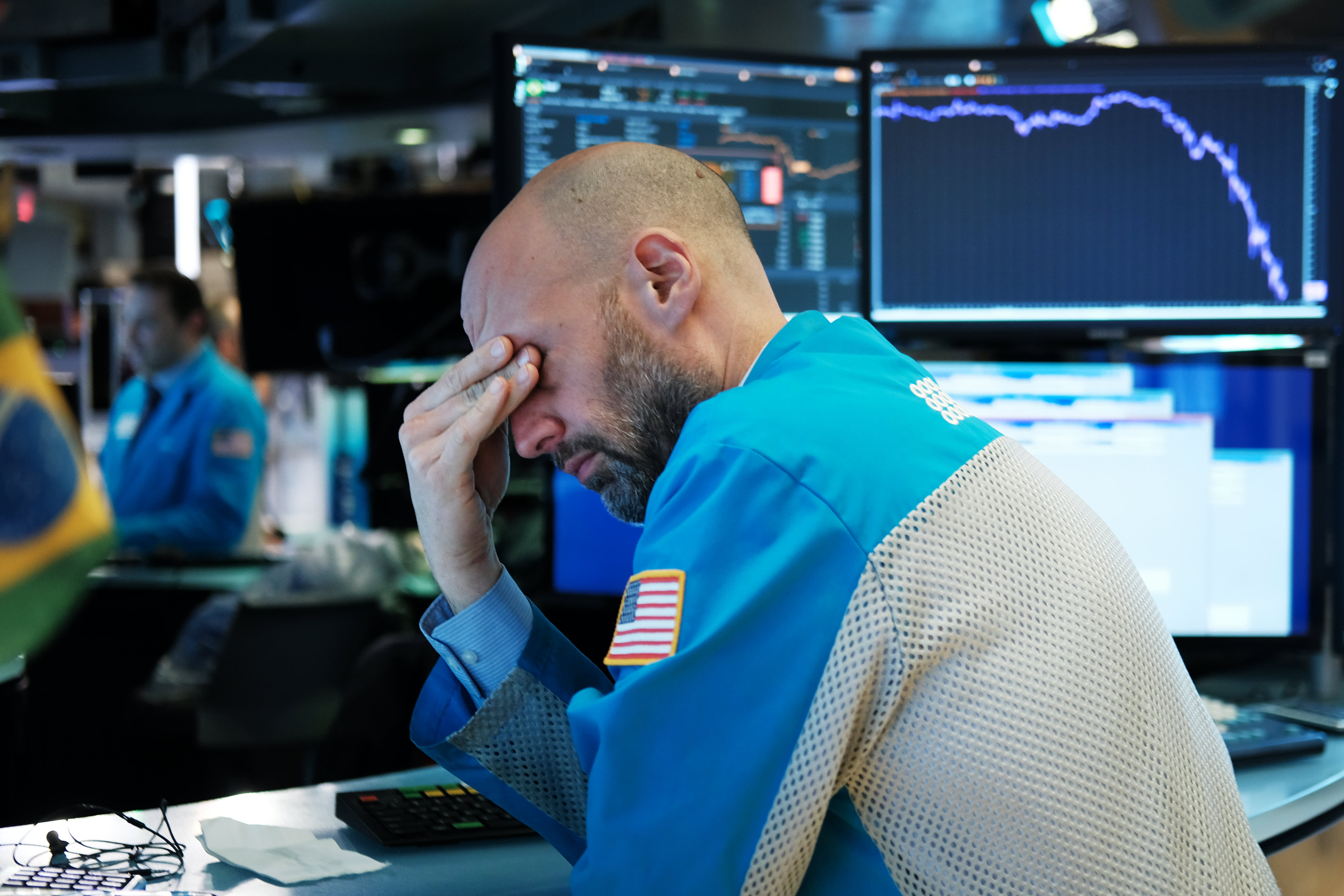The stock market has gone so haywire amid the coronavirus crisis that some strategists on Wall Street are giving up on forecasting what comes next.
Over the past week or so, chief market strategists at BMO, Oppenheimer and Canaccord Genuity have all suspended their year-end targets on the S&P 500, blaming the unprecedented economic uncertainty that makes projecting the market a fool’s errand.
“For the first time in our collective careers, we have decided to suspend our year-end S&P 500 price and EPS targets in favor of rolling 12-month forecasts,” BMO’s Brian Belski and Nicholas Roccanova said in a note. “We believe there is minimal rational method for predicting the path of US stocks given the rapidity and volatility of data, forecasts, and emotions on a nearly daily basis.”
Tony Dwyer of Canaccord Genuity said it is “impossible” to gauge the economic impact of the health crisis until a peak in coronavirus cases. Oppenheimer’s John Stoltzfus said he will resume his forecast when the length of the “hard stop” of the U.S. economy can be determined.
Their withdrawals came after the S&P 500 tumbled into a bear market in the fastest pace ever as the pandemic worsened. This week, the S&P 500 pulled off its best three-day rally since 1933, which some characterized as just a bear market “head-fake” bounce. Wall Street’s fear gauge, the Cboe Volatility Index, stubbornly stayed above the 60 threshold after shooting above 80 to its highest level in history last week. Stocks then tanked again on Friday.
“Withdrawing guidance — whether it is by CEOs or by analysts — tends to be a capitulative response,” said Peter Atwater, the president of Financial Insyghts, a research firm focused on investor sentiment. “Uncertainty is so high that the future is unknowable … What is so striking to me is the speed at which people have gone from feeling extremely certain and invincible to being in complete panic-mode.”
2008 flashbacks
Nejat Seyhun, a finance professor at the University of Michigan, recalled similar suspensions during the financial crisis, adding some analysts also dropped their forecasts on banks in 2008.
“They are just being prudently cautious since volatility has shot up and the range of possibilities is much wider now than two months ago,” said Seyhun. “It makes perfect sense to hold off at this time.”
The ever-worsening pandemic as well as the delay in governmental response almost made traditional models obsolete. Analysts are struggling to assess what kind of damage is done to corporate financials, while more and more companies pulled their 2020 guidance in light of global supply chain disruptions.
A count by CNBC indicates that at least 100 U.S. companies have withdrawn their quarterly or yearly guidance in light of global supply chain disruptions. Meanwhile, the S&P 500 earnings growth estimate for the entire 2020 calendar year has turned negative, according to Refinitiv.
Mission possible?
Still, the majority of the strategist cohort on Wall Street haven’t called it a day, and some are looking at alternative indicators to attempt to time a bottom.
The consensus year-end target for the S&P 500 comes to 3,038 as of Friday, representing a nearly 20% gain from the current level of 2,541, according to the CNBC Market Strategist Survey that rounds up 16 top strategists’ forecasts.
Tom Lee, Fundstrat’s head of research, came up with his earnings estimate by assessing different sectors’ exposure to the coronavirus and the EPS sensitivity to top-line declines and marginal costs. He sees an S&P 500 topline decline by 20% in the second quarter.
Lee forecasts a V-shape recovery ahead, with the S&P 500 recovering half of its losses as soon as next month and potentially all of its losses later this year. He has a year-end target of 3,450 for the S&P 500.
“We are in non-normal times with the business cycle interrupted,” Lee said in a note on Wednesday. “We also believe stocks made a structural low last week, akin to October 2008. Thus, investors can pick winners vs losers.”
Meanwhile, JPMorgan’s market guru Marko Kolanovic believes the S&P 500 could be back to record levels by early next year, using the U.S. Health Weather Map that he said shows that the social distancing measures and shutdowns put in place by major cities are working.
— CNBC’s Michael Bloom and Nate Rattner contributed to this report.
Subscribe to CNBC PRO for exclusive insights and analysis, and live business day programming from around the world.
